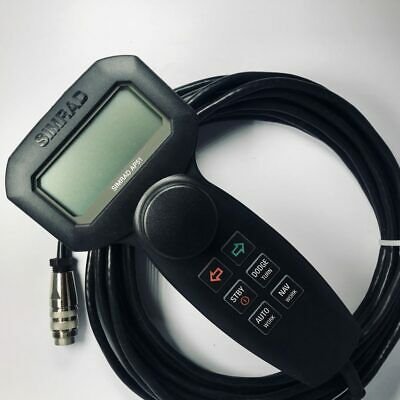O C Diver
Guru
- Joined
- Dec 16, 2010
- Messages
- 12,867
- Location
- USA
- Vessel Name
- Slow Hand
- Vessel Make
- Cherubini Independence 45
Does your boat have power steering, and if so, how big is the boat?
Planning on doing preventative maintenance on my steering system (Hynautic) this summer, to include rebuilding the rudder cylinder and replacing, seals in the helm, and maybe replacing all the fluid. The system is 18+ years old.
Started thinking about the helm pump which is a major chore to steer with. I can turn it fine, but if the autopilot quit, it would be miserable to steer all day. It has the 950 PSI valves and I'm thinking about switching to the 500 PSI valves which would cut the effort in half. Easy enough to try for around $225. Just don't know if my 3' by 2' rudder will require the higher pressure valves.
Then I started thinking about the autopilot pump. I live on autopilot; it's 18 years old; has 4,000+ hours on it. At some point it will need new brushes and maybe more.
So I went to see my John Deere guy who is the local expert on hydraulics. Commercial grade helm, constant volume pump direct drive off my ZF transmission, solenoid block with flow dividers etc for the autopilot, and reservoir, is a little over 3 boat units. Add another one to cover hose fittings and the cylinder rebuild kit. I would do the install myself.
If you've ever driven a boat with commercial grade power steering, well it's really nice! If I were crossing oceans, I would have to rationalize reliability versus complexity. But I'm not; I'm a coastal cruiser. Hand steering the boat the way it is now for 100 miles across a Great lake would be miserable. If I had to do it in a following sea....
Anyway, curious what those with power steering think, and the rest of you.
Ted
Planning on doing preventative maintenance on my steering system (Hynautic) this summer, to include rebuilding the rudder cylinder and replacing, seals in the helm, and maybe replacing all the fluid. The system is 18+ years old.
Started thinking about the helm pump which is a major chore to steer with. I can turn it fine, but if the autopilot quit, it would be miserable to steer all day. It has the 950 PSI valves and I'm thinking about switching to the 500 PSI valves which would cut the effort in half. Easy enough to try for around $225. Just don't know if my 3' by 2' rudder will require the higher pressure valves.
Then I started thinking about the autopilot pump. I live on autopilot; it's 18 years old; has 4,000+ hours on it. At some point it will need new brushes and maybe more.
So I went to see my John Deere guy who is the local expert on hydraulics. Commercial grade helm, constant volume pump direct drive off my ZF transmission, solenoid block with flow dividers etc for the autopilot, and reservoir, is a little over 3 boat units. Add another one to cover hose fittings and the cylinder rebuild kit. I would do the install myself.
If you've ever driven a boat with commercial grade power steering, well it's really nice! If I were crossing oceans, I would have to rationalize reliability versus complexity. But I'm not; I'm a coastal cruiser. Hand steering the boat the way it is now for 100 miles across a Great lake would be miserable. If I had to do it in a following sea....
Anyway, curious what those with power steering think, and the rest of you.
Ted
Last edited:

